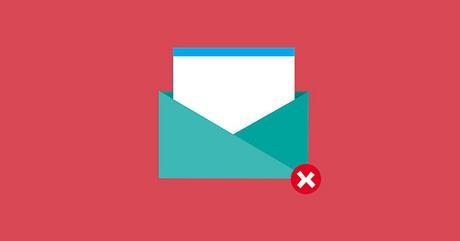 As businesses adopt the use of social media and online marketing, it’s not uncommon that email marketing is left out of the equation. That’s a problem. More importantly, it’s a missed opportunity. Email marketing offers small business owners one of the strongest platforms for reaching your target market with a personalized message. The trick is knowing how to use it properly.
As businesses adopt the use of social media and online marketing, it’s not uncommon that email marketing is left out of the equation. That’s a problem. More importantly, it’s a missed opportunity. Email marketing offers small business owners one of the strongest platforms for reaching your target market with a personalized message. The trick is knowing how to use it properly.
Not yet convinced that email marketing is worth the time for your small business? Consider these stats:
- Email is a marketing ROI driver, yielding an average of 4,300 percent return.
- Email is the most effective medium for all marketing, including targeting customers for acquisition and retention.
- Email is three times more powerful for driving conversions than social media.
For a time or resource-strapped small business owner, one of the best things about email marketing is that it doesn’t require a high level of expertise to execute, is fairly inexpensive, and can potentially deliver a big impact. Here are some email marketing best practices to help you get started:
Provide value. If you take nothing else from this list, remember this tip. Value is the number one reason your customers will opt in. Make sure you understand your customers and what they want from you, then deliver it. Let’s take a small local business like a gardening center for example. They could regularly send promotional information e-blasts and leave it at that. However, when you think about their target audience, there are many opportunities to deliver added value that’s far beyond information on the latest items on sale. Their target audience is likely comprised of lawn and garden enthusiasts who probably want to know about gardening tips and tricks, lawn care secrets and advice, and new equipment (or plants) they might be interested in. Sending out a regular email newsletter packed with information they need, sprinkled with some promotions and/or mention of a loyalty or a referral program here and there, and you’ll be delivering the kind of value that gets them excited about opening your next email newsletter, and better yet, perhaps even sharing that with their friends.
Know your target audience, serve them. In today’s social age, consumers can smell generic, spammy messaging a mile away. They expect more, and you can give it to them. As mentioned above, knowing your customers is critical. Define primary market segments and send custom content instead of mass emailing your entire community. In the example above, you can segment your list by sending your lawn care customers one version of an email, your gardening enthusiasts another version, and your rose-lovers yet another version of that email. Personalization helps you create deeper relationships with your customers—it shows them you’re thinking about them and their needs and not just about selling things or promoting your business, and it can make a big impact when it comes to growing your business.
Maintain your opt-ins and opt-outs! Allowing consumers to control their engagement with your business is a critical piece of the equation. You can’t force individuals to look at your email content and, let’s face it, those who don’t open your emails aren’t likely to convert anyway. Add several calls-to-action that make opting into your email marketing campaigns easy, but always include an easy to find, easy to use opt-out option on every piece of content you deliver. Not only will a failed opt-in/opt-out make consumers upset, it may get your company blacklisted under the CAN-SPAM Act.
Market your email communications. Take some time to look at the most effective ways to earn subscribers to your email newsletter. Try offering a value-add such as a one-time discount on a purchase in order to encourage sign-ups. Add a subscription sign-up call to action on every page of your website, in a position that’s easy to see. Market your email (and the value it delivers) in those calls to action, as well as on your social media channels (especially on Facebook). You might also consider the use of strategic website pop-ups to make sure site visitors know they have the option to sign up. People universally groan when the subject of website popups arises, but they have proven to be remarkably effective when it comes to list building. Make content within emails shareable to increase your readership, including shareability on social media channels.
Avoid generic email lists. No matter what a list broker might tell you, it’s really not in your best interest to buy an email lists. Not only are they not representative of your actual audience, small business owners generally don’t have time or the expertise to segment an audience retrospectively based on a generic purchased email list. A whole bunch of un-targeted names and email addresses does not a valuable lead database make. Actively work to develop and grow your email list, because that organic customer base is going to be exponentially more valuable in the long run than un-targeted leads.
Open and close subscriptions gracefully. Always send an email welcoming new subscribers to your newsletter or email program. Use this first communication to let them know what kind of content they can expect to receive from you and how it will deliver value. When it comes to folks who opt out of your list, be gracious. Consider using a survey screen or final email asking for feedback on why they opted out. Think of this as an opportunity to optimize your campaigns and gather information and insights that will help you in the future, rather than as a lost cause.
Image is everything. The devil is always in the details. Make sure your email communications are well-designed and well-written. Break up the text and make reading your email or newsletter visually appealing to the intended audience. Make sure you spend as much time thinking about writing a compelling subject line as you do on the content of the email, as that’s your greatest chance to entice someone to open that email. Also be sure to always include your company contact information and an easy link to click through to your website or to any special promotion or offering. Most importantly, think about the user experience you are creating with every email you send, and make sure you serve up the very best experience possible.
Manage timing effectively. Pay attention to how often you send emails and when you send them. Some audiences are more open to content received at certain times of day. Avoid sending out too many emails within shortened timeframes. Think about your own experience with email marketing. Do you get upset when companies send you messages every day? Even worse, how about two or three times a day? Diversify content and send it strategically to avoid the pitfalls of negatively impacting your email subscribers with unwanted engagement. Create a publishing schedule that you think makes sense and see what happens as a result.
Testing … 1, 2, 3. One of the most important things to remember when it comes to email marketing is to always be testing. This goes hand in hand with the timing mentioned above, and your data will show you what is working. Test sending emails with different subject lines. Test sending html versions of emails against sending plain text versions of those same emails. Test time of day and day of week email sends and experiment to see what works best. Your data with regard to email opens and click through rates will show you what your customers like, and that will be your roadmap for the future.
Email marketing can be a powerful component of your marketing efforts for your small business. It doesn’t have to cost a fortune and it likely won’t take an extraordinary amount of effort on your part. What it can do is give you yet another way to connect with your customers and prospective customers in a manner than can potentially deliver as much value for them as it does for you. And that’s a win all the way around. Focus on providing value first and don’t forget to always be testing, measuring, and adapting as a result—everything else will fall into place.
Where are you with regard to email marketing for your small business? What challenges do you have to making that happen, or what secrets or success stories do you have to share? I’d love to hear from you.
Additional Resources on this Topic
Want to Engage With Millennials? Don’t Forget to Email Them
Advanced Email Marketing Methods Needed for SMBs to Be Effective
An SMB Beginner’s Guide to Email Marketing

Julie Neumark (Manager, Content Marketing, YP). Julie leads the content strategy for YP’s Marketing Solutions website, directed at local businesses. She is also a published songwriter and avid runner who enjoys traveling and spending time with her family. You can connect with her on Twitter ( @julieneumark) and on LinkedIn.
photo credit: The 5 Mistakes That Will Land Your Email in the Spam Folder via photopin (license)

